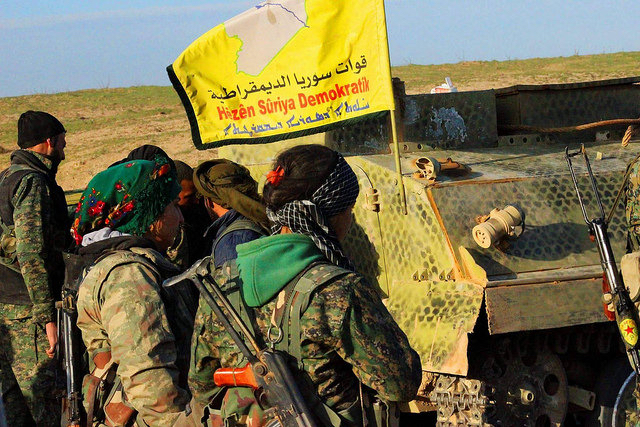The Young Turk has before him the European ideal of a united national State. He hopes to be able to “Turkify” the non-Turkish Mohammedan races—Kurds, Persians, Arabs, and so on—by administrative measures and by Turkish school education and by appeals to the common Mohammedan interest.
He is afraid of the Christian nations—Armenians, Syrians and Greeks—on account of their cultural and economic superiority, and their religion appears to him an obstacle impeding “Turkification” by peaceful measures. Therefore they must be extirpated or forced into Mohammedanism.
The Turks do not realise that they are sawing off the branch on which they themselves are sitting. Who is to bring progress to Turkey, except the Greeks, the Armenians and the Syrians, who constitute more than a quarter of the population of the Turkish Empire?
The Turks, the least gifted among the races living in Turkey, themselves form only a minority of the population, and are still far behind even the Arabs in civilisation. Is there anywhere any Turkish commerce, Turkish handicraft, Turkish manufacture, Turkish art, Turkish science? Even law and religion, even the literary language, is borrowed from the subjected Arabs.
We teachers, who for years have taught Greeks, Armenians, Arabs, Turks and Jews in German schools in Turkey, can only declare that of all our pupils the pure Turks are the least willing and the least capable. Whenever one hears about anything accomplished by a Turk, one can be sure, in nine cases out of ten, that the person concerned is a Circassian, or an Albanian, or a Turk with Bulgar blood in his veins. Judging from my own personal experience, I can only prophesy that the real Turk will never accomplish anything in commerce, manufacture or science.
The German newspapers have told us a great deal lately about the Turkish “hunger for education”; it is said that the Turks are thronging eagerly to learn German, and even that courses of instruction in that language for adults are being arranged in Turkey. No doubt they are being arranged, but with what result? They go on to tell one of a language course at a Technical School, which started with twelve Turkish teachers as pupils.
The author of this story, however, forgets to add that after four lessons only six, after five lessons only five, after six lessons only four, and after seven lessons only three pupils presented themselves, so that after the eighth lesson the course had to be abandoned, before it had properly begun, owing to the indolence of the pupils. If the pupils had been Armenians, they would have persevered town to the end of the school year, learnt patiently, and come away with a fair knowledge of the German language.

What is the duty of Germany, as well as of every civilized Christian nation, in the face of the Armenian massacres? We must do all we can to preserve the lives of the 500,000 Armenian women and children who may now [beginning of 1916] be still in existence in Turkey and who are abandoned to starvation—to preserve them from a fate which would be a disgrace to the whole civilized world. The hundreds of thousands of deported women and children, who have been left lying on the borders of the Mesopotamian desert, or on the roads which lead there, will not be able to preserve their miserable existence much longer.
How long can people support life by picking grains of corn out of horse dung and depending for the rest upon grass? Many of them will be beyond help on account of the underfeeding, which has continued for many months, and of the attacks of dysentery which are so prevalent. In Konia there are still a few thousand Armenians alive—educated people from Constantinople, who were in easy circumstances before their deportation, physicians, authors, and merchants; help for them would still be possible before they succumb to the fate that threatens all.
There are still 1,500 healthy Armenians—men, women and children, including grandmothers 60 years old and many children of six and seven—who are at work breaking stones and shovelling earth, on the part of the Bagdad Railway between Eiran and Entilli, near the big tunnel. At the present moment Superintendent Engineer Morf, of the Baghdad Railway, is still providing for them, but their names too have already been registered by the Turkish government.
As soon as their work is completed, that is to say, probably in two or three months, and they are no longer wanted, “new homes will be assigned to them”—which means that the men will be taken away and slaughtered, the good-looking women and girls will find their way into the harems, and the others will be driven about in the desert without food, until the end comes.
The Armenian people has a claim to German help. Even apart from our common duty as Christians, we Germans are under a special obligation to put a stop to the complete extirpation of the surviving half million of Armenian Christians. We are the Allies of Turkey, and having eliminated the influence of the French, English and Russians, we are the only foreigners who have any say in Turkey.

We may indignantly repudiate the lies circulated in enemy countries accusing the German Consuls of having organised the massacres. We shall not, however, destroy the belief of the Turkish people that Germany has ordered the Armenian massacres unless energetic action be at last taken by German diplomats and German officers.
If only the one reproach remained that our timidity and our weakness in dealing with our Ally had prevented us from preserving half a million women and children from death by starvation, the image of the German War in the mirror of history would be disfigured, for all time, by an ugly feature. It would be a serious mistake to imagine that the Turkish government would, of its own accord, desist from the extermination of the women and children.
A short time before my departure from Aleppo in May 1916, all the women and children encamped at Ras-el-Ain, on the Baghdad railway, whose number was estimated at 20,000, were mercilessly slaughtered.
Adapted from the anthology Germany, Turkey and Armenia (1917). Photograph courtesy of Joel Schalit. Published under a Creative Commons license.





